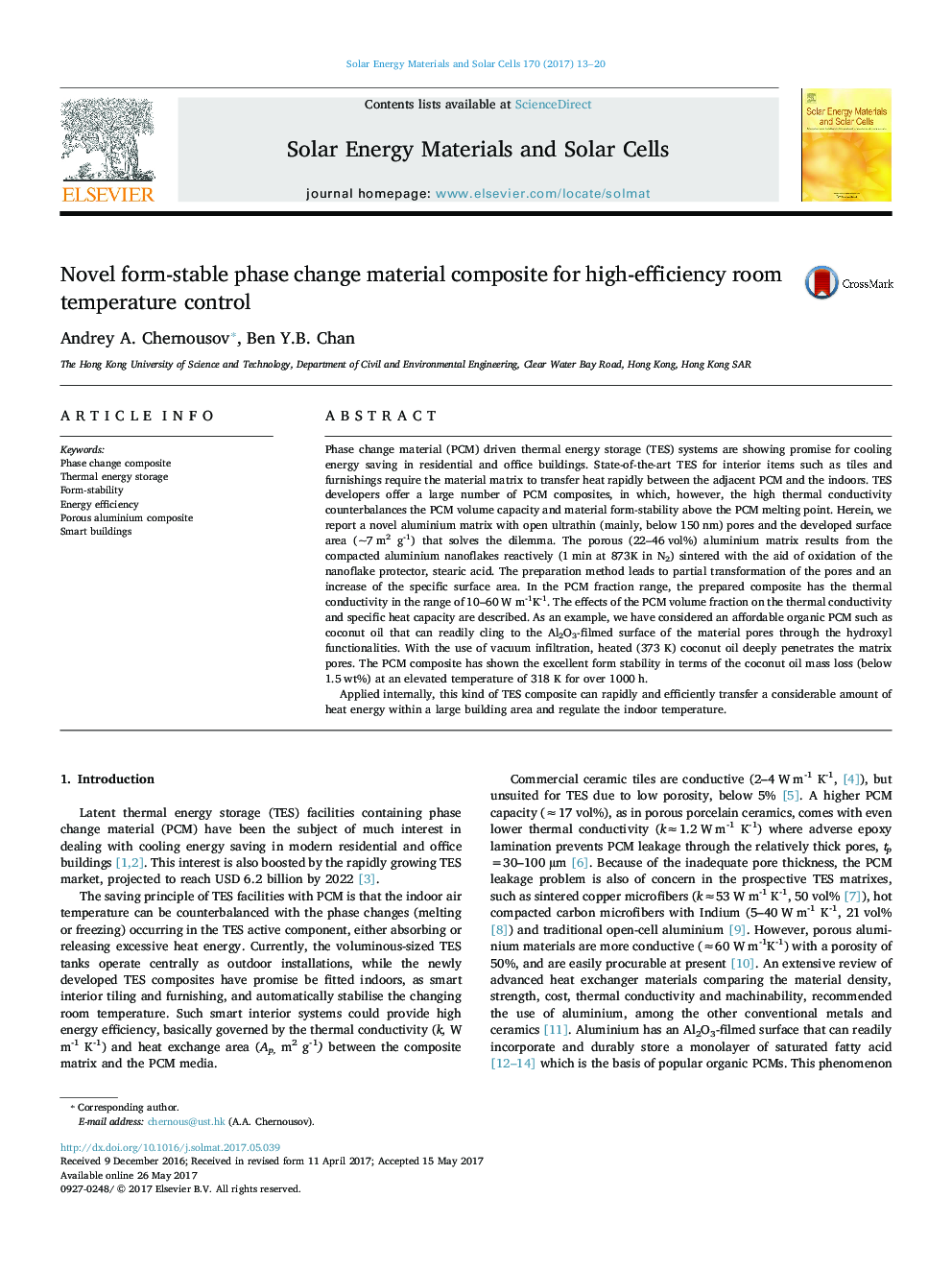| کد مقاله | کد نشریه | سال انتشار | مقاله انگلیسی | نسخه تمام متن |
|---|---|---|---|---|
| 6456801 | 1420653 | 2017 | 8 صفحه PDF | دانلود رایگان |
- The partial sintering mechanism in the compacted aluminium nanoflakes was considered.
- Prepared material matrix possesses the significant heat exchange surface area with PCM (~7Â m2Â g-1) and thermal conductivity, up to 60Â Wm-1Â K-1.
- Form-stability of the PCM composite was achieved due to the extremely thin (mainly, below 150Â nm) pore channels in the matrix.
Phase change material (PCM) driven thermal energy storage (TES) systems are showing promise for cooling energy saving in residential and office buildings. State-of-the-art TES for interior items such as tiles and furnishings require the material matrix to transfer heat rapidly between the adjacent PCM and the indoors. TES developers offer a large number of PCM composites, in which, however, the high thermal conductivity counterbalances the PCM volume capacity and material form-stability above the PCM melting point. Herein, we report a novel aluminium matrix with open ultrathin (mainly, below 150Â nm) pores and the developed surface area (~7Â m2 g-1) that solves the dilemma. The porous (22-46Â vol%) aluminium matrix results from the compacted aluminium nanoflakes reactively (1Â min at 873K in N2) sintered with the aid of oxidation of the nanoflake protector, stearic acid. The preparation method leads to partial transformation of the pores and an increase of the specific surface area. In the PCM fraction range, the prepared composite has the thermal conductivity in the range of 10-60Â WÂ m-1K-1. The effects of the PCM volume fraction on the thermal conductivity and specific heat capacity are described. As an example, we have considered an affordable organic PCM such as coconut oil that can readily cling to the Al2O3-filmed surface of the material pores through the hydroxyl functionalities. With the use of vacuum infiltration, heated (373 K) coconut oil deeply penetrates the matrix pores. The PCM composite has shown the excellent form stability in terms of the coconut oil mass loss (below 1.5Â wt%) at an elevated temperature of 318 K for over 1000Â h.Applied internally, this kind of TES composite can rapidly and efficiently transfer a considerable amount of heat energy within a large building area and regulate the indoor temperature.
Journal: Solar Energy Materials and Solar Cells - Volume 170, October 2017, Pages 13-20
